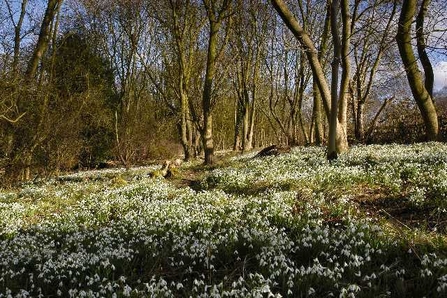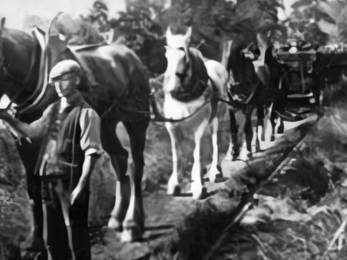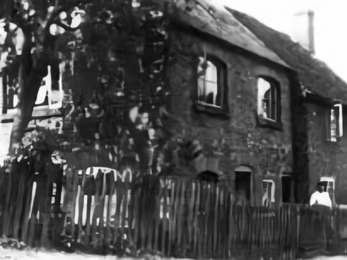Many people visit Dimminsdale nature reserve in late winter and early spring to come and admire the spectacular display of vast carpets of white snowdrops, giving signs of warmer days ahead. But do you know why these snowdrops are there in the first place?
A brief history of Dimminsdale Nature Reserve

A map from 1859 indicates that cottages were once on the nature reserve to house people who worked on the Staunton Harold Estate. The map shows several buildings present on the site, two of which were semi-detached properties built near the main snowdrop area.
The Shaw family (a large family with 8 children) moved into both of these cottages sometime around 1900. The head of the family was Thomas Shaw, who was the head woodsman of the Staunton Harold Estate; and so the cottages came with the position.
The family made some adaptations to the cottages and lived a sustaining life on the reserve. They kept pigs in the garden and the family also built a bread oven, where it is presumed the sons would bake bread to sell to other people living at Dimminsdale or to the wider community.
Remains of the cottages can be seen through the bare trees in late winter such as bricks, remains of walls, and even the bread oven itself.
The main areas where we now find the snowdrops were once the locations of the cottage's large gardens. As the gardens were occupied by families, the residents planted flowers such as the snowdrops we now see and the daffodils and periwinkles which flower in the spring.
People lived in the cottages until the 1960s, not easy considering there was no electricity or mains water. The families would wash in the pools most of the year and the children would skate on them in the winter (However, we wouldn’t advise doing either!).
All the cottages and outbuildings were knocked down in the 1960s by the Dove Water Board when Staunton Harold Reservoir was built, as there were concerns that the residents would potentially cause pollution to the water.
Depending on the weather, March can be the best time of year to experience the reserve. And if you visit during sunny weather in spring, you might be lucky enough to spot hares boxing in the fields. The mixed woodland is also great for birdlife, and you might even spot deer!
So on your next visit to Dimminsdale nature reserve, look out for the large meadows of snowdrops, but also keep your eyes open for clues to see some of the histories, from people who used to once live and work there.
*Please note that there are many steps, exposed tree roots, and slopes on this nature reserve.
Information to write this blog was taken from Stewart, S. (2018) A Social & Industrial History Study based upon Staunton Harold, Lount, Dimminsdale and, the Trust’s own publication available in the Dimminsdale section of the website click here.






